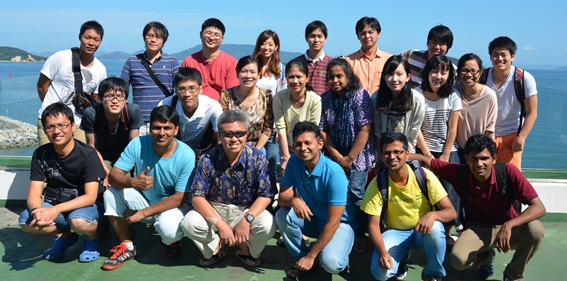未分類
category
2021.6.9; A paper of Dr. Arai (got PhD degree in 2021.3) has been accepted in Front Microbiol.
Journal: Frontier in Microbiology
Authors: Nobuo Arai, Tsuyoshi Sekizuka, Yukino Tamamura-Andoh, Lisa Barco, Atsushi Hinenoya, Shinji Yamasaki, Taketoshi Iwata, Ayako Watanabe-Yanai, Makoto Kuroda, Masato Akiba, Masahiro Kusumoto*.
Abstract: Salmonella enterica subsp. enterica serovar Typhimurium sequence type 34 (ST34) and its monophasic variant (Salmonella 4,[5],12:i:-) are among the most frequently isolated clones from both humans and animals worldwide. Our previous study demonstrated that Salmonella Typhimurium/4,[5],12:i:- strains isolated in Japan could be classified into nine clades and that clade 9 consisted of ST34 strains. In Japan, ST34/clade 9 was first found in the 1990s and has become predominant among food animals in recent years. In the present study, we analyzed the whole genome-based phylogenetic relationships and temporal information of 214 Salmonella Typhimurium/4,[5],12:i:- ST34/clade 9 strains isolated from 1998 to 2017 in Japan. The 214 strains were classified into two sublineages: the newly identified clade 9–2 diverged from clade 9 in the early 2000s and has predominated in recent years. Clonally expanding subclades in clades 9–1 or 9–2 lacked Gifsy-1 or HP1 prophages, respectively, and some strains in these subclades acquired plasmids encoding antimicrobial resistance genes. Additional genome reduction around the fljB gene encoding the phase 2-H antigen was generated by an IS26-mediated deletion adjacent to the transposon in clade 9–2. Although most of the clade 9 strains were isolated from cattle in Japan, the clonally expanding subclades in clade 9–2 (i.e., all and 24% strains of subclades 9–2a and 9–2b, respectively) were isolated from swine. The spread of clade 9 in recent years among food animals in Japan was responsible for the emergence of multiple host-adapted sublineages involving the clonally expanding subclades generated by mobile genetic element-mediated microevolution.


